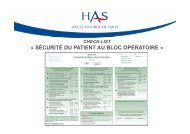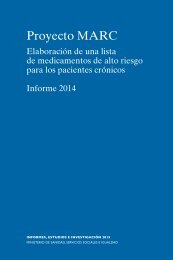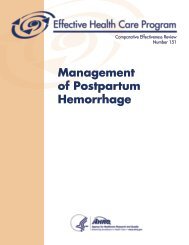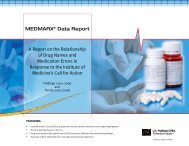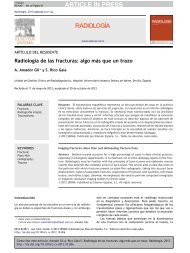for Invasive Procedures (NatSSIPs)
Z3q53
Z3q53
Create successful ePaper yourself
Turn your PDF publications into a flip-book with our unique Google optimized e-Paper software.
OFFICIAL<br />
4.10.2 DURING THE PROCEDURE<br />
i. Be<strong>for</strong>e removal of the prosthesis from its packaging, the operator should confirm<br />
the following prosthesis characteristics with the procedural team:<br />
ii.<br />
• Type, design, style or material.<br />
• Size.<br />
• Laterality.<br />
• Manufacturer.<br />
• Expiry date.<br />
• Sterility.<br />
• Dioptre <strong>for</strong> lens implants.<br />
• Compatibility of multi-component prostheses.<br />
• Any other required characteristics.<br />
Once the correct prosthesis has been selected, any prostheses not to be used<br />
<strong>for</strong> that patient should be clearly separated from the correct prosthesis to<br />
minimise the risk of confusion between prostheses at the time of implantation.<br />
4.10.3 AFTER THE PROCEDURE<br />
i. A record of the implants used must be made in the patient’s notes and<br />
appropriate details should be shared with the patient after the procedure.<br />
When a manufacturer’s label is available, this should be placed in the notes.<br />
When it is not, the following should be recorded:<br />
• Manufacturer.<br />
• Style.<br />
• Size.<br />
• Manufacturer’s unique identifier <strong>for</strong> the prosthesis, e.g. the serial<br />
number.<br />
ii. Compliance with local, national and international implant registries is<br />
encouraged, and in certain cases may be a mandatory legal requirement.<br />
iii.<br />
iv.<br />
The organisation must have a process in place <strong>for</strong> recording which prostheses<br />
are used <strong>for</strong> which patients.<br />
The organisation must ensure that appropriate and agreed stock levels of<br />
prostheses are maintained.<br />
v. Instances of failed prosthesis verification, wrong prosthesis insertion and “near<br />
misses” should be reported, recorded and openly discussed at the debriefing,<br />
and fed into local governance processes to act as the basis <strong>for</strong> learning and<br />
the development of new or altered procedures to promote patient safety.<br />
vi.<br />
vii.<br />
Audit of prosthesis verification data must be per<strong>for</strong>med.<br />
When manufacturers’ labelling, packaging or implant defects contribute to<br />
failure of prosthesis verification, a process must be in place through which<br />
both the manufacturers and the MHRA (Devices) are in<strong>for</strong>med.<br />
40



